The medium-frame 44-caliber revolver, whether chambered in 44 Special or 44 Magnum, is a great outdoors revolver, often used for defense against animals. We agree that this is a formidable combination, but it also demonstrates formidable recoil, perhaps a step beyond what’s necessary to do double duty as a personal-defense round day to day.
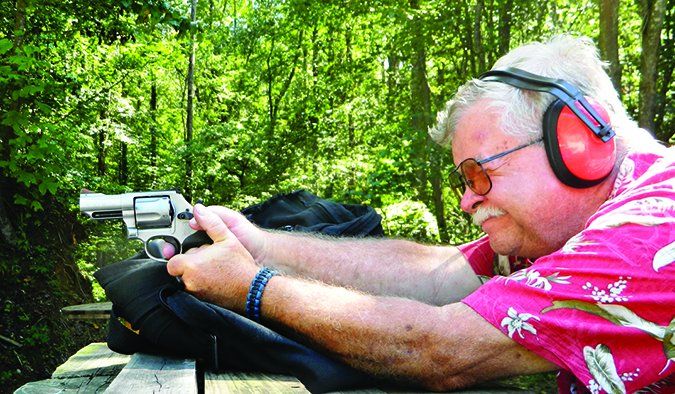
To see how a trio of wheelguns would do when pitted against each other at the range, we selected the Ruger GP100 1761 44 Special, a Smith & Wesson Model 69 Combat Magnum 10064 in 44 Magnum and a Taurus Tracker, also in 44 Magnum. All are stainless-steel five-shooters, weigh within a few ounces of each other, and have similar features. The Smith & Wesson Model 69 Combat Magnum is a new version with a 2.75-inch barrel and round butt. The Taurus Tracker 44 Magnum has a 4 inch barrel. The Ruger GP100 chambered in 44 Special is a relatively new introduction, being introduced in 2016.
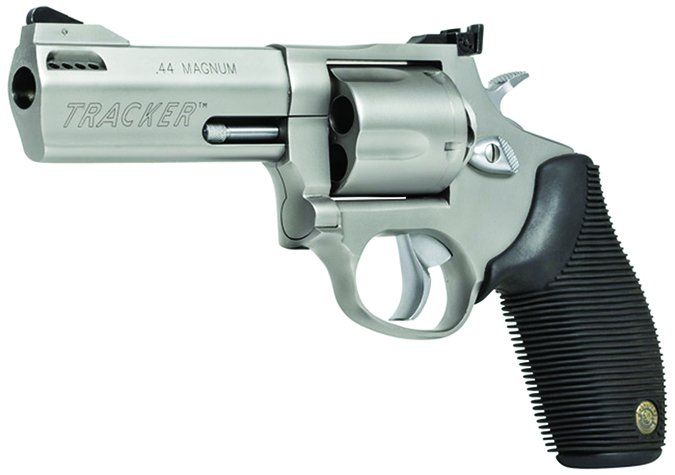
With an overall length of 7.8 inches and an overall height of 5.7 inches, the 35.8-ounce loaded Smith & Wesson is the most compact and easiest to carry. The 44 Special-chambered Ruger GP100 exhibited one of the finest accuracy performances we’ve seen, shooting 1.7-, 1.6-, and 1.5-inch average groups with three loads. The Taurus Tracker delivered the highest velocities and energy with two of the three 44 Special loads and both 44 Magnum loads we used — in particular the Winchester Super-X 44 Magnum 240-grain jacketed hollowpoint, which ran at 1288 fps and produced 883 foot-pounds of muzzle energy.
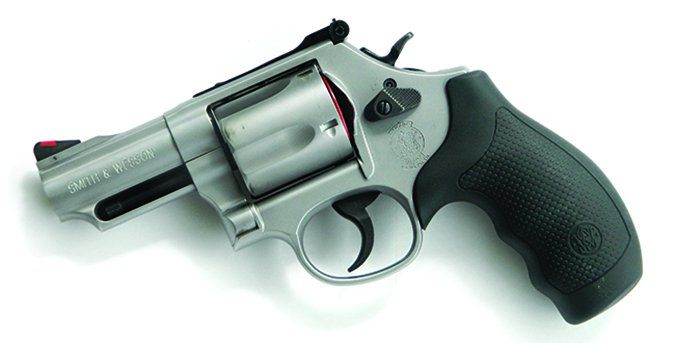
The 44 Special revolver is an outdoors mainstay. Savvy outdoorsmen appreciate the accuracy and modest recoil of the 44 Special. The 44-caliber bullet, particularly a 255-grain semi-wadcutter, offers plenty of mass and has good sectional density that translates to deep penetration at less than Magnum velocity: 1000 fps isn’t slow for a heavy revolver bullet. While there are small-frame and ultralight revolvers designed for defense use, a medium-to-heavy-frame 44 Special will safely handle loads that move the cartridge into deer and boar territory out to 50 yards. For protection against bears, feral dogs, and big cats, the 44 Special with heavy loads is adequate.
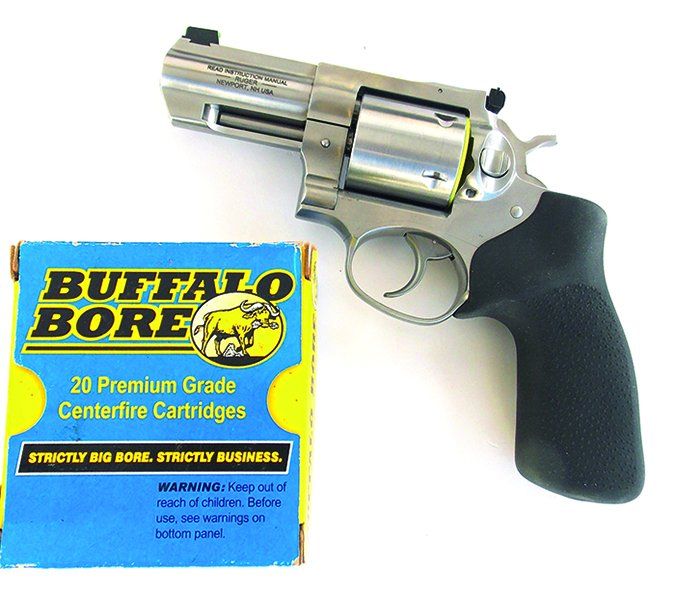
The 44 Magnum is even better if big Western bears are part of the problem. But it is difficult to carry a 46-ounce Smith & Wesson Model 629 loaded handgun on a daily basis. When fly-fishing or hiking, this is a heavy weight on the hip. A medium-frame revolver should offer all of the power we need for animal defense at close range. It is also all of the recoil an occasional user may care to handle. This same revolver isn’t too bulky to conceal for personal defense, and with proper loads, it will make a good personal and home-defense revolver. The major manufacturers make this happen by offering five-shot revolvers chambering the 44 Special, allowing the shoehorning of the 44 into a 357 Magnum-size frame.
Range Data
| HSM 44 Special 240-gr. Lead | Taurus Tracker | Smith & Wesson Model 69 | Ruger GP100 |
| Average velocity | 781 fps | 668 fps | 742 fps |
| Muzzle energy | 324 ft.-lbs. | 237 ft.-lbs. | 293 ft.-lbs. |
| Smallest group | 1.5 in. | 1.8 in. | 1.4 in. |
| Largest group | 2 in. | 2.3 in. | 1.9 in. |
| Average group size | 1.8 in. | 2 in. | 1.7 in. |
| Double Tap 44 Special 180-gr. Controlled Expansion JHP | |||
| Average velocity | 1013 fps | 885 fps | 1032 fps |
| Muzzle energy | 410 ft.-lbs. | 312 ft.-lbs. | 425 ft.-lbs. |
| Smallest group | 2 in. | 2.5 in. | 1.2 in. |
| Largest group | 2.7 in. | 3.3 in. | 1.9 in. |
| Average group size | 2.3 in. | 2.9 in. | 1.6 in. |
| Buffalo Bore 44 Special 200-gr. Barnes TAC XP | |||
| Average velocity | 1025 fps | 919 fps | 998 fps |
| Muzzle energy | 466 ft.-lbs. | 374 ft.-lbs. | 442 ft.-lbs. |
| Smallest group | 2.3 in. | 2.4 in. | 1.1 in. |
| Largest group | 2.9 in. | 3.2 in. | 1.8 in. |
| Average group size | 2.6 in. | 2.9 in. | 1.5 in. |
| SIG Sauer Elite 44 Magnum 240-gr. JHP | |||
| Average velocity | 1225 fps | 1150 fps | |
| Muzzle energy | 799 ft.-lbs. | 704 ft.-lbs. | |
| Smallest group | 1.9 in. | 2.4 in. | |
| Largest group | 2.8 in. | 3.6 in. | |
| Average group size | 2.4 in. | 3.1 in. | |
| Winchester Super X 44 Magnum 240-gr. JHP | |||
| Average velocity | 1288 fps | 1131 fps | |
| Muzzle energy | 883 ft.-lbs. | 681 ft.-lbs. | |
| Smallest group | 2 in. | 2.6 in. | |
| Largest group | 3 in. | 3.6 in. | |
| Average group size | 2.5 in. | 3 in. | |
| We fired three five-shot groups for accuracy at 25 yards. We recorded velocities with a Competition Electronics Chronograph at 10 feet. Ammunition sources: Winchester 44 Magnum Super X 240-grain jacketed hollowpoint ($324.50/200 rounds @ CheaperThanDirt.com); SIG Sauer Elite 44 Magnum 240-grain jacketed hollowpoint ($21.20/20 rounds @ CheaperThanDirt.com); Buffalo Bore 44 Special 200-grain Barnes TAC XP bullet ($45.40/20 rounds @ MidwayUSA.com); Double Tap 44 Special 180-grain Controlled Expansion jacketed hollowpoint ($22.22/20 rounds @ CheaperThanDirt.com); HSM 44 Special 240-grain lead ($29.60/50 rounds @ VenturaMunitions.com). | |||
Additional Velocity Comparisons
| Cartridge & Bullet | Taurus Tracker | Smith & Wesson Model 69 | Ruger GP100 |
| 44 Special HSM 200-gr. lead | 781 fps | 668 fps | 742 fps |
| 44 Special HSM 240-gr. lead | 709 fps | 645 fps | 684 fps |
| 44 Special HSM 240-gr. JHP | 706 fps | 634 fps | 656 fps |
| 44 Special Double Tap 180-gr. JHP | 1013 fps | 885 fps | 1032 fps |
| 44 Special Double Tap 200-gr. JHP | 924 fps | 793 fps | 812 fps |
| 44 Special Buffalo Bore 200-gr. Barnes | 1025 fps | 919 fps | 998 fps |
| 44 Magnum SIG Elite 240-gr. JHP | 1225 fps | 1150 fps | N/A |
| 44 Magnum Winchester 240-gr. JHP | 1288 fps | 1131 fps | N/A |
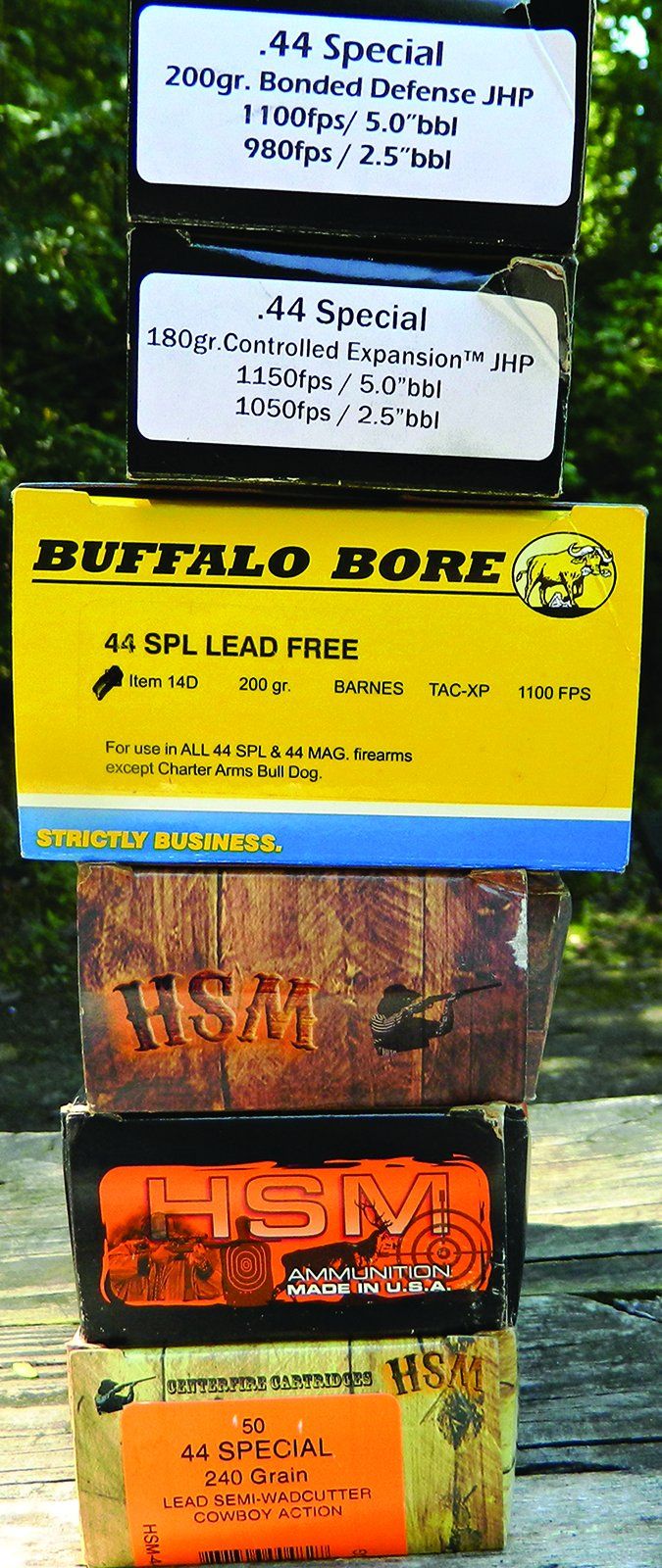
The relatively short barrel and hand-filling grip makes for a revolver that is fast into action. These revolvers are intended for use at relatively short range and the demands on accuracy are not great. However, we found that these handguns are quite accurate. We were concerned with the shooters’ ability to control a 35-ounce 44 Magnum revolver and used a variety of loads to test our fears. We found three capable revolvers that will tax the skill of any shooter to be all he or she can be. Not surprisingly, most of the firing was done with the more genteel 44 Special ammunition, which offered better control and less banging than the 44 Magnums.
Ruger GP100 1761 44 Special, $649
GUN TESTS GRADE: B
For many of the raters, they liked shooting the Ruger GP100 the most among the revolvers tested. However, this is the largest and heaviest revolver as well, so it was expected it might be more docile with 44 Special rounds. Accuracy was outstanding. The GP100 44 Special is more accurate than all but a very few revolvers we have tested. If the contest had been among just 44 Special revolvers, the GP100 might have gotten the top rating, but the other revolvers were 44 Magnums and offered more energy.
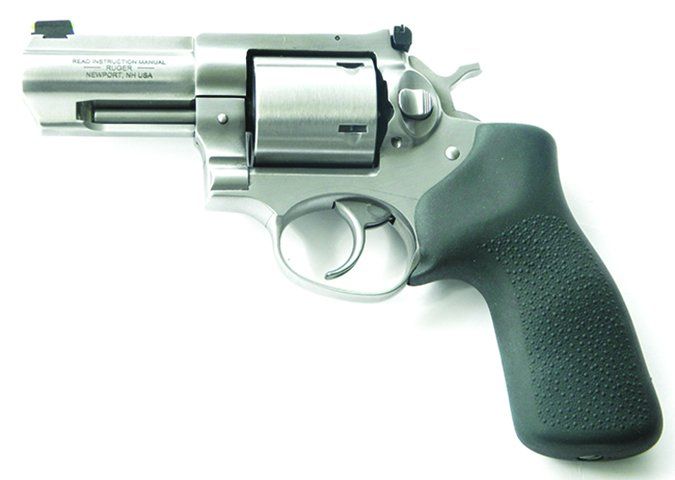
| ACTION | Double action |
| OVERALL LENGTH | 8.5 in. |
| OVERALL HEIGHT | 6.1 in. |
| MAX WIDTH | 1.56 in. |
| WEIGHT UNLOADED | 36 oz. |
| WEIGHT LOADED | 37.8 oz. |
| BARREL | 3 in. satin stainless steel, 1:20 RH twist, 6 grooves |
| CYLINDER | Capacity 5-rds., satin stainless unfluted; triple locking |
| FRAME | Satin stainless steel |
| FRONT STRAP HEIGHT | 2.5 in. |
| BACK STRAP HEIGHT | 4.5 in. |
| GRIPS | Hogue Monogrip, black rubber |
| GRIP THICKNESS | 1.2 in. |
| GRIP CIRCUMFERENCE | 4.8 in. |
| FRONT SIGHT | Green fiber optic |
| REAR SIGHT | Adjustable for elevation, windage |
| SIGHT RADIUS | 4.5 in. |
| TRIGGER PULL WEIGHT (SA) | 4 lbs. |
| TRIGGER PULL WEIGHT (DA) | 14 lbs. |
| TRIGGER SPAN (SA) | 2.5 in. |
| TRIGGER SPAN (DA) | 2.8 in. |
| WARRANTY | None |
| TELEPHONE | (336) 949-5200 |
| WEBSITE | Ruger.com |
| MADE IN | USA |
| STATE APPROVED | CA, MA |
This was our price from CheaperThanDirt.com. This is a distinctive revolver. The cylinder is unfluted, and the grips are a special model from Hogue, designed to combat recoil and offer excellent hand fit. The barrel is 3 inches long. The rear sight is the standard Ruger adjustable sight. We found the range of adjustment good and the sight picture clean and sharp. The front sight is a bright-green fiber optic. This is a burly handgun and the heaviest tested at 36 ounces unloaded. The satin-stainless-steel finish is well polished. We detected no tool marks. Pebble-grain grips offer a good grasping surface. They were tied with the Taurus for firing comfort. The GP100 balances well. It is neither handle heavy nor barrel heavy. The balance point is similar to a Single Action Army Sheriff’s Model or Smith & Wesson Model 27 with 3.5-inch barrel, each well-balanced revolvers. The feel is different from the 4-inch-barrel Ruger GP100 357 Magnum in a superior manner for combat shooting versus target shooting.
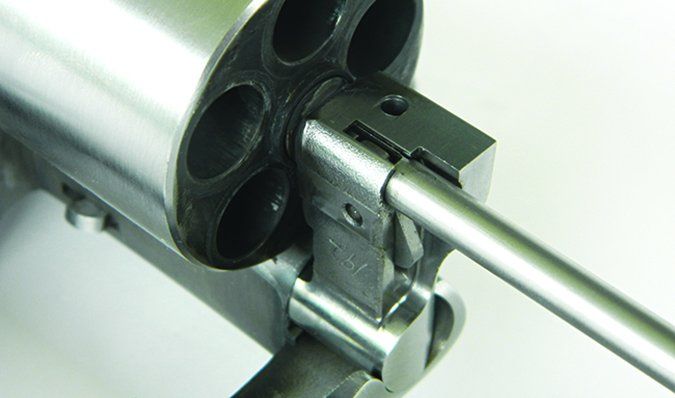
The cylinder locks up at the front and rear and also by use of a detent in the crane. As for the action, the trigger is smooth in double-action fire with no hitches or hard spots. The single-action trigger breaks at 4.0 pounds even. The raters attempted to qualify the feel of the five-shot Ruger versus the six-shot GP100. Part of the force exerted to press the trigger is used to revolve the cylinder and part to cock and drop the hammer. The GP100 five-shooter may be a little faster than the six-shooter, but this is subjective. We performed the firing evaluation with two goals. First, we determined how smooth the revolver was in combat shooting and recoil control. Personal defense and animal defense are most important. Second, we established the accuracy potential of the revolvers. Study shows that many have survived an animal attack by shoving the revolver into the body of one of the big cats or a bear. These animals attack quickly, bowling the victim over, and often go for the neck or head. The defender has little choice but to place the muzzle of the revolver in the body and fire quickly. A self-loader would jam after the first shot. We did not make these rules, the animals do.
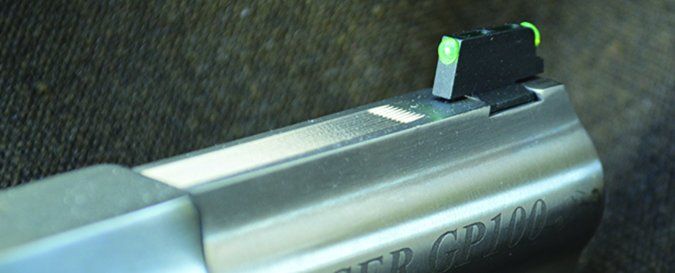
During the evaluation, we used a total of eight loads, six 44 Special and two 44 Magnum. Three were fired for accuracy in all three guns. These were the HSM 44 Special 240-grain lead, the Double Tap 180-grain Controlled Expansion JHP, and the Buffalo Bore 200-grain Barnes TAC XP bullet. During the combat evaluation, we also used the HSM 44 Special 200-grain flat point ($33.50/50 rounds @ MidwayUSA.com), the HSM 44 Special 240-grain JHP ($39/50 rounds @ MidwayUSA.com), and the Double Tap 200-grain JHP bonded core ($27/20 rounds @ DoubleTapAmmo.net) These loads covered a range of power from Cowboy Action loads to personal defense to maximum-effect outdoors loads. All are useful in the GP100 44 Special, and, of course, can be chambered in the 44 Magnum wheelguns from Taurus and Smith. To evaluate the two 44 Magnum revolvers, we used the SIG Sauer Elite 240-grain JHP and the Winchester Super-X 240-grain JHP. We fired the revolvers with 44 Special for defense use at 7 and 10 yards in fast double-action work, loading each revolver with 100 cartridges, including a mix of standard velocity and higher-energy loads. We fired for accuracy at 25 yards using both a braced firing position and a Bullshooters rest. We considered a 15-yard test because these are short-barrel handguns, but the medium frames and excellent sights convinced us to go ahead at 25 yards after a few sighting-in runs. Some of the loads are very light, intended for Cowboy Action and general use. They are very pleasant to fire and were found to be accurate. The heavier loads, such as the Buffalo Bore 200-grain Barnes, are maximum-effect loads for the 44 Special. We fired 10 rounds of 44 Magnum in each revolver so chambered, the Taurus and the Smith & Wesson, on the combat course at 5 and 10 yards, five turns at each distance. We also fired five-shot groups with the 44 Magnum for accuracy, about all the raters can stand. After all, recoil transmits to the shooter when you are in a braced position. We did not use shooting gloves and kept the experience real, and it was plenty real.
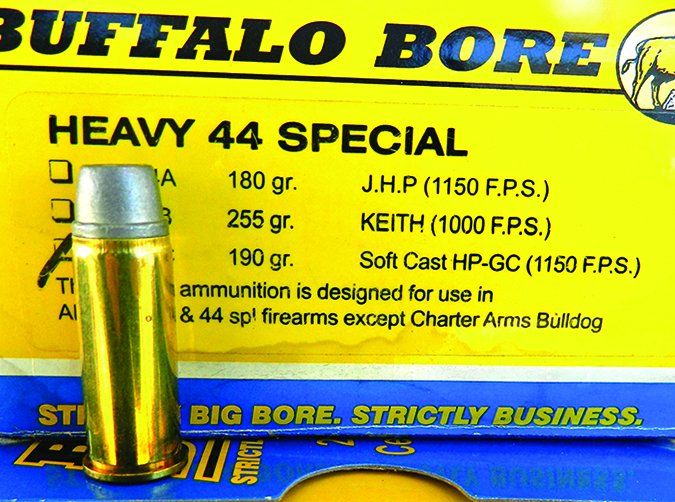
In combat-firing drills, all of the revolvers were a handful, but not as difficult as expected. One rater noted his only 44 Magnum is a Ruger Blackhawk with 7.5-inch barrel (Blackhawk, not Super Blackhawk), and it is painful to fire with its thin grips. The two double-action revolvers here were less difficult, he said. The Tracker was more useful on the combat course and more accurate from the benchrest. Each was pretty hairy off the benchrest. The bottom line: If you are bowled over by an attacker and have to go with what you know, either the Taurus or Smith will serve as a last-ditch defense piece when loaded with 44 Magnum loads. We would not use 44 Magnums for home defense. We think 44 Specials in the Taurus and Smith would be plenty for that chore.
The Ruger proved to be the most comfortable handgun to handle in rapid fire, and it was the most accurate in combat drills. It is also the largest and heaviest handgun. Even with the heaviest load tested, the Buffalo Bore 200-grain load, the revolver was comfortable to fire. Tested from the Bullshooters shooting rest, the GP100 was fired with three loads. We had quite a surprise. It isn’t unusual for the 4-inch-barrel 357 Magnum GP100 to exhibit group sizes of 1 to 1.5 inches with loads it likes at 25 yards. The GP100 44 Special, however, with its short barrel wasn’t expected to be this accurate. We found, however, the GP100 consistently grouped five shots into less than 2 inches more often than not. During the sighting-in phase, getting the revolver on target before the recorded fire, a rater fired a 0.75-inch three-shot group at 15 yards with the Buffalo Bore 200-grain Barnes load. The smallest group of the test fired for record with the same Buffalo Bore load was a 1.1-inch group at 25 yards. That is with a short barrel and a fiber-optic front sight.
Our Team Said: The GP100 is easily the most accurate revolver tested, the most capable in combat shooting, and the most comfortable to fire generally. But it can’t match the power of the 44 Magnums.
Smith & Wesson Model 69 Combat Magnum 10064 44 Special/44 Magnum, $732
GUN TESTS GRADE: B-
The Model 69 Combat Magnum is the shortest and most concealable revolver tested. Recoil was pleasant with the 44 Special. When it came to the 44 Magnum, we started cutting skin and having to bear down with a gorilla grip. This revolver has much merit for personal defense when loaded with 44 Specials. When loaded with 44 Magnum, it’s a lightweight last-ditch defense against big bears.
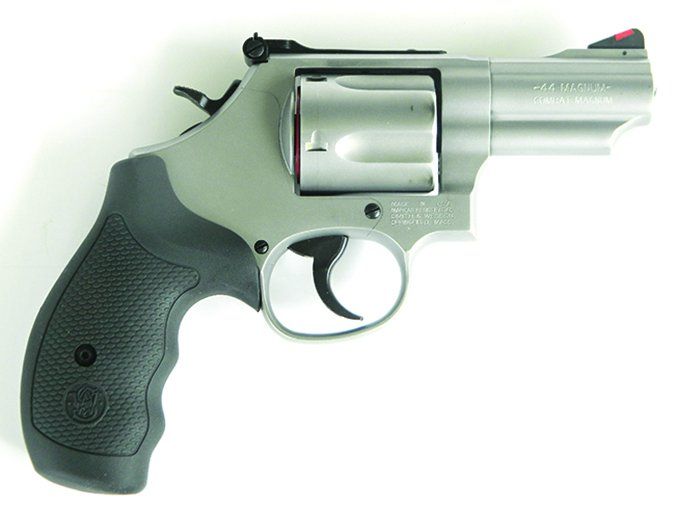
| ACTION | Double action |
| OVERALL LENGTH | 7.8 in. |
| OVERALL HEIGHT | 5.7 in. |
| MAX WIDTH | 1.56 in. |
| WEIGHT UNLOADED | 34 oz. |
| WEIGHT LOADED | 35.8 oz. |
| BARREL | 2.75 in., stainless steel |
| CAPACITY | 5 |
| FRAME | Stainless steel L-frame |
| FRONT STRAP HEIGHT | 2.75 in. |
| BACK STRAP HEIGHT | 4.1 in. |
| GRIPS | Black synthetic |
| GRIP MATERIAL | Rubber |
| GRIP THICKNESS | 1.15 in. |
| GRIP CIRCUMFERENCE | 4.75 in. |
| FRONT SIGHT | Red ramp insert |
| REAR SIGHT | Adjustable black blade |
| SIGHT RADIUS | 4.25 in. |
| TRIGGER PULL WEIGHT (SA) | 5.5 lbs. |
| TRIGGER PULL WEIGHT (DA) | 14.2 lbs. |
| TRIGGER SPAN (SA) | 2.4 in. |
| TRIGGER SPAN (DA) | 3 in. |
| WARRANTY | Lifetime |
| TELEPHONE | (800) 331-0852 |
| WEBSITE | Smith-Wesson.com |
| MADE IN | USA |
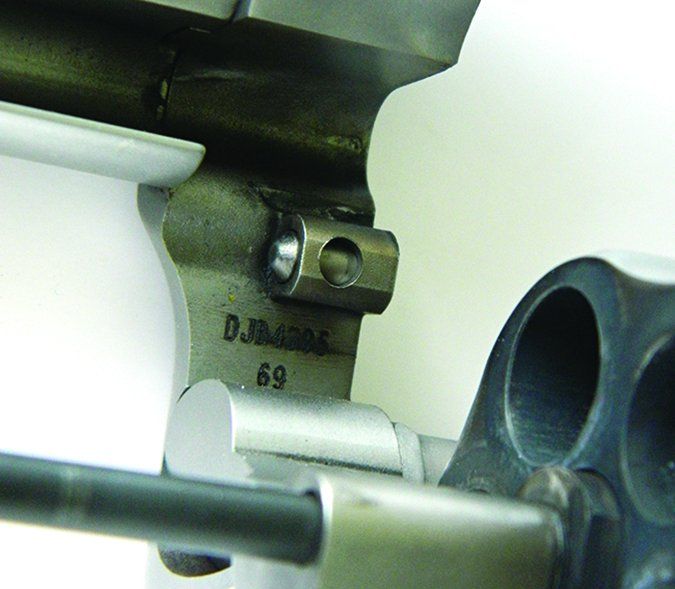
Smith & Wesson has a long history of manufacturing powerful five-shot revolvers, including 38s on the 32 frame and the M60 357 Magnum. The original M69 featured a 4-inch barrel and square grips. The new 2.75-inch-barrel version has much appeal as a lightweight defensive handgun. While the larger M69 with 4-inch barrel recoils more than the heavier original 44 Magnum, the Model 629, it might prove useful as a brush gun for deer and boar. The shorter M69 is a defensive revolver. The M69 isn’t a K frame, but is instead built on the bigger L frame, an important distinction. This M69 features a fluted 44 Magnum cylinder. The cylinder is longer than the Taurus but not as wide at 1.72 inches long by 1.53 inch wide compared to the 44 Magnum Taurus cylinder at 1.67 inch by 1.56 inch. You might be able to use longer 255-grain or 300-grain hard-cast bullet handloads more readily in the longer Smith & Wesson cylinder, but we think the shooter’s capacity to withstand recoil would fade long before this. In our experience, 44 Magnum shooters fire the 44 Special for economy and low recoil but they are really 44 Magnum fans. Shooters who purchase 44 Specials do so because they appreciate the cartridge’s behavior.
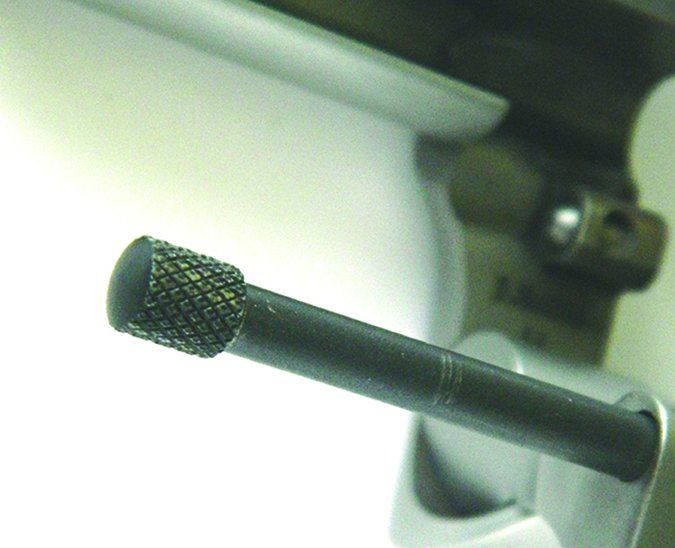
The Smith & Wesson features well-designed round-butt-style grips. An option would be to fit Hogue or Pachmayr grips to this revolver, even those that convert the round cut to square butt, if you desire to use it as an outdoors revolver. The stock grips do not offer much pebble grain but proved comfortable in firing. The revolver is well finished in stainless steel. The rear sight is a fully adjustable unit. The front post features the trademark red insert that aids in rapid sight acquisition. The Smith & Wesson M69 features a lockup point in the frame that meets the crane, solidly locking the revolver. The ejector rod does not lock in the barrel shroud. One rater has seen the small-frame 357 Magnum refuse to unlock after battering of the ejector and the old-style under-the-barrel lockup, a reasonable deletion. (This was covered in detail at American Gunsmith magazine.) One rater noted that the ejector rod looked thinner than his other Smith & Wesson revolvers. We broke out the calipers and he was correct. The S&W M69 ejector rod is 0.15 inch in diameter, the S&W 442 in his pocket had a 0.19-inch-diameter ejector rod, and the Smith & Wesson Model 20 he keeps at home ready is a heavy-duty 0.24-inch-diameter rod. The Taurus ejector rod measured 0.18 inch and the Ruger 0.21 inch. Whether this matters or not, time will tell, but Smith & Wesson fans are sure to ask. We had no issues with ejection, even with the heaviest loads. The double-action trigger has a different feel that the other revolvers, indeed all were unique. It is heavy but smooth. The single-action trigger is acceptable at 5.5 pounds without creep.
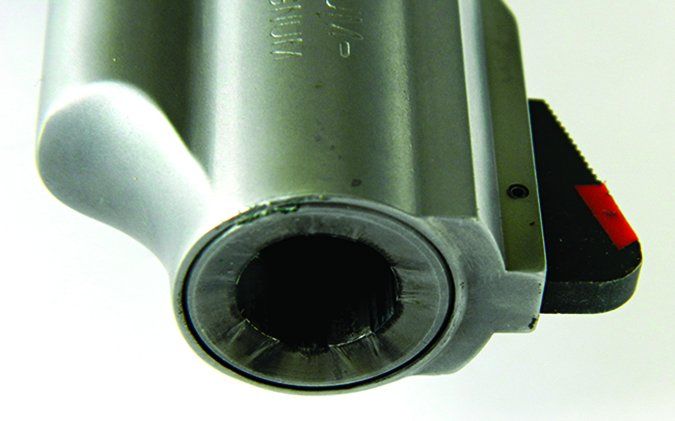
In combat drills, the M69 proved fast from leather and fast onto target. Recoil when using Cowboy Action loads felt subjectively no more than a six-shot 38 Special revolver of the same weight with standard loads and a bit more like the +P 38 Special with other loads, and heavier with the Buffalo Bore load. The Smith & Wesson wasn’t as effective as the Ruger or the Taurus during the combat drills, but it was close to the Taurus — and when the short barrel and grip are considered, it did well. There was not a yawning chasm in performance but rather a definite and noticeable difference in combat firing. This was most pronounced with the heavier Double Tap loads.
When firing for accuracy off the bench, the Smith & Wesson Model 69 Combat Magnum was accurate with 44 Special loads but less accurate than the other two revolvers. It is certainly accurate enough for personal defense. If outdoors and emergency use are considered, more accuracy may be desirable. Just the same, for this size handgun, it wasn’t a dog in accuracy. Recoil was more noticeable with the heavier 44 Special loads, but never uncomfortable. Any heavy load you would use in the other revolvers will be comfortable to fire in the Smith & Wesson revolver. One rater snagged his thumb and opened a cut that bled due to the cylinder release striking his thumb. This was only with 44 Magnum loads.
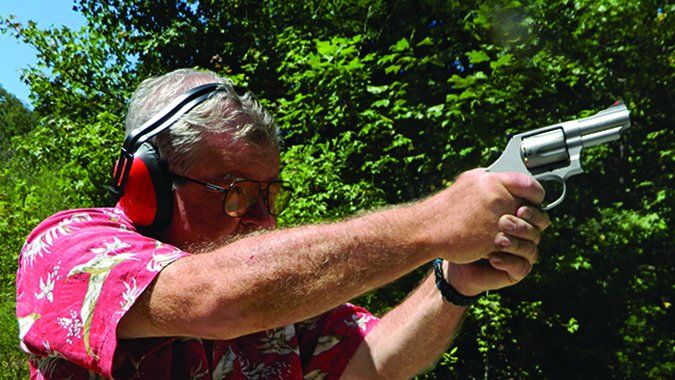
Ammunition testing revealed something not altogether unexpected, but which was present to a greater extent than predicted. The Smith & Wesson developed less velocity with all loads than the other handguns. As an example, the HSM 44 Special 200-grain load developed 781 fps in the Tracker and 742 fps in the Ruger, but only 668 fps in the Smith & Wesson. The heavy Buffalo Bore load was 106 fps faster in the Tracker and 79 fps faster in the Ruger. This may be expected of short-barrel handguns, but with 0.25 inch separating the Ruger and the Smith & Wesson, we feel this was a greater-than-average velocity loss. The deficit was more pronounced with 44 Magnum loads compared to the Taurus revolver, as we show in the accompanying Range Data table as well as in the velocity comparison table above.
Our Team Said: For personal defense, the Smith & Wesson Model 69 makes sense. Losing 157 fps to the Taurus when deploying 44 Magnum loads makes the Taurus look better in the animal-defense application. Based on recoil control and accuracy, we rated the Smith & Wesson below the Taurus.
Taurus Tracker 44TRACKER4SS 2-440049TKR 44 Magnum, $449
GUN TESTS GRADE: A (Best Buy)
The Tracker is a formidable revolver. It proved reliable and should be useful as a personal-defense revolver for the home or in carry with 44 Special loads. For defense against wild animals, the 44 Magnum loads are a good choice. The Tracker’s ribber grips and barrel ports make for good recoil control. The Tracker is the longest revolver tested, but the handle dimensions are smaller than the GP100 and comparable to the M69. Overall, we felt that the Tracker gave us our money’s worth. A few tool marks did not detract from this 44 Magnum’s performance.
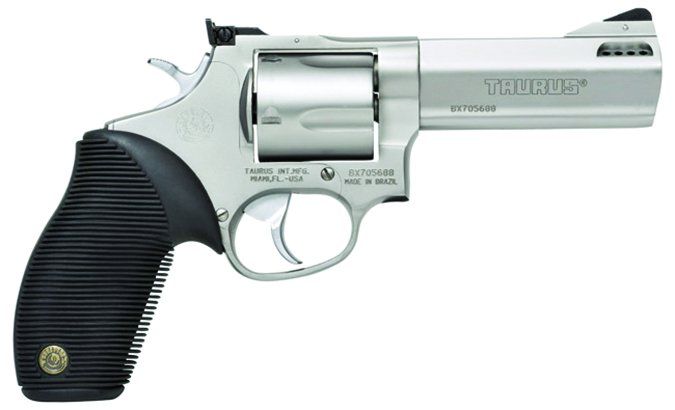
| ACTION | Double action |
| OVERALL LENGTH | 8.8 in. |
| OVERALL HEIGHT | 5.5 in. |
| MAX WIDTH | 1.56 in. |
| WEIGHT UNLOADED | 33.8 oz. |
| WEIGHT LOADED | 35.6 oz. |
| BARREL | 4 in.; matte stainless steel; 1:18.75 RH twist w/ 5 grooves; 8 ports |
| CAPACITY | 5 |
| FRAME | Compact stainless steel |
| FRONT STRAP HEIGHT | 2.5 in. |
| BACK STRAP HEIGHT | 4 in. |
| GRIPS | Ribbed rubber |
| GRIP THICKNESS | 1.2 in. |
| GRIP CIRCUMFERENCE | 5.5 in. |
| FRONT SIGHT | Day Glo red insert, fixed |
| REAR SIGHT | Adjustable for windage, elevation |
| SIGHT RADIUS | 5.5 in. |
| TRIGGER PULL WEIGHT (SA) | 6.5 lbs. |
| TRIGGER PULL WEIGHT (DA) | 15 lbs. |
| TRIGGER SPAN (SA) | 2.75 in. |
| TRIGGER SPAN (DA) | 3.5 in. |
| SAFETY | Taurus Security System; transfer bar |
| WARRANTY | Lifetime |
| TELEPHONE | (800) 327-3776 |
| WEBSITE | TaurusUSA.com |
| MADE IN | Brazil |
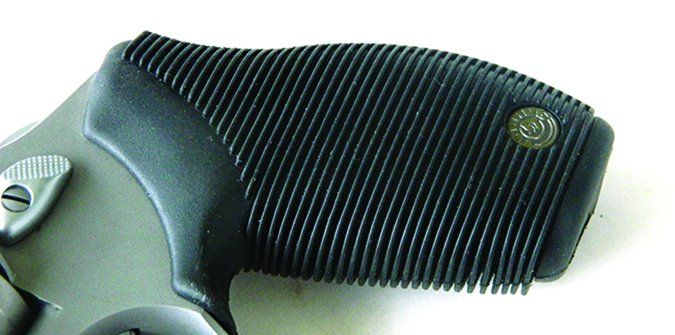
This was our price at CheaperThanDirt.com. The Taurus Tracker has been around longer than the other revolvers, being introduced specifically as an outdoors revolver. As we learned, it also has personal-defense applications. The Tracker features a 4-inch barrel so it is larger than the other handguns, but at 32 ounces, it was the lightest revolver tested. For home defense or field use in a proper holster, we don’t feel that this makes a practical difference compared to the pay off in velocity, energy, and accuracy with the 4-inch barrel. The Taurus Tracker doesn’t fit into a niche of K-frame or L-frame like the S&W, but rather was a fresh effort by Taurus. The design and the Ribber grips make for a revolver that sits low in the hand, with the bore axis lower than the other revolvers. The Tracker’s stainless-steel construction, fit, and finish were well done, save for some minor tooling marks. The Taurus also has a lockup detent on the crane.
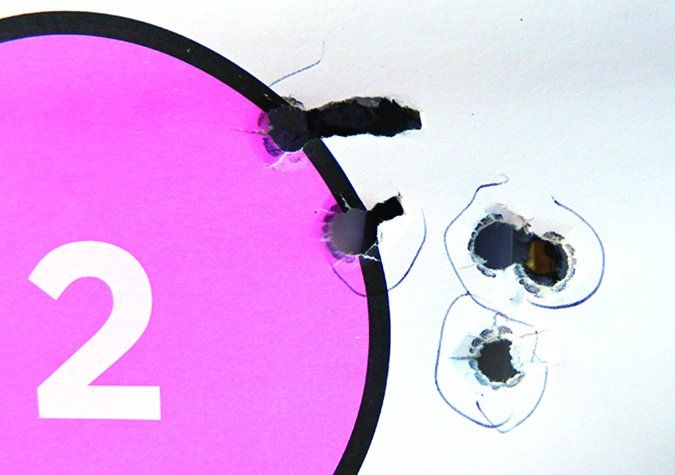
The rear sight is adjustable. We compared the three sights and could detect no advantage of one rear sight over the other. However, we really liked the green fiber optic of the Ruger. The Taurus front sight features a red insert that is very bright in any type of light, so we rated it above the Smith & Wesson in this area. The barrel is 4 inches long and features four ports on each side to aid in controlling heavy loads, an asset when firing 44 Magnum loads. The Tracker might be a hunter’s back-up to finish off downed game, and, of course, it would help the user fend off attacks by man or beast. The front post might allow more accurate aiming at longer range than the GP100.
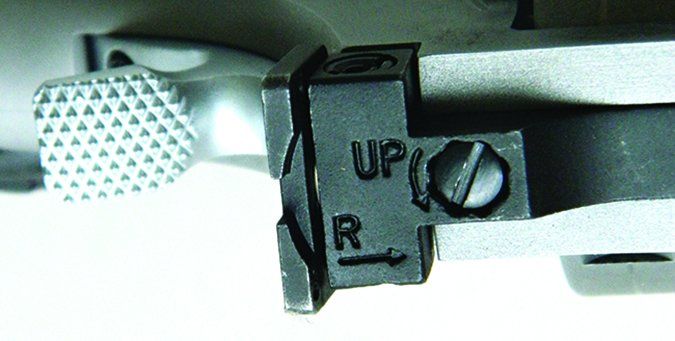
The grip frame is smaller than the Smith & Wesson or the Ruger. This is one revolver that does not need aftermarket grips; in fact, we feel that it would be a mistake to replace the Tracker’s grips. The Ribber design gives a little in recoil and insulates the firing hand from the frame. The trigger action uses modern coil springs and is a different feel than the other revolvers. The double-action trigger was not as heavy as the Smith & Wesson, but it was rated to be the least smooth of the three, but useful.
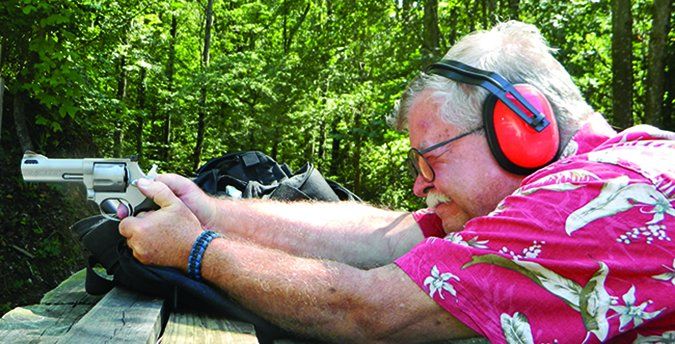
The single-action trigger broke at 6.5 pounds, heaviest of the test. We would have liked a lighter trigger. The cylinder latch of the Taurus pushes forward to release the cylinder in common with the Smith & Wesson, while the Ruger presses in toward the frame. We did not have the cylinder release rapping our thumb with the Taurus as it did with the Smith & Wesson with the heaviest Magnum loads. The overwhelming advantage of the Taurus is the Ribber grips. As far as felt recoil when firing 44 Special loads, no real difference was detectable until we reached the Buffalo Bore 200-grain Barnes load. At that point we felt the Taurus was the most comfortable handgun off the bench, but none were painful. The trigger was smooth enough during the combat-firing stage and trigger reset fast enough for self-defense use.
Our Team Said: Fired for groups at 25 yards, the Taurus was nearly as accurate as the Ruger GP100 44 Special in some instances, but it did not reach the brilliant accuracy demonstrated by the Ruger at its best. However, the Tracker bested the shorter Smith & Wesson Model 69. A lighter trigger action may have made a difference in accuracy for the Taurus. We gave the Taurus an A rating because it performed well with no problems. Function and accuracy were good. It also cost less than the other revolvers, so we rated it a Best Buy. We feel that the Tracker is a good choice for those wishing to deploy a revolver for defense against dangerous animals, and with the proper loads, it would be a stout home defender.
Written and photographed by Robert Campbell using evaluations from Gun Tests team testers.


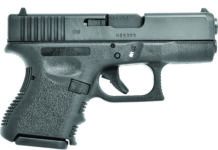
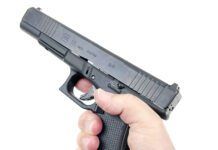
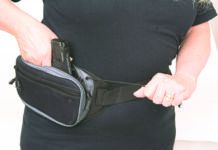






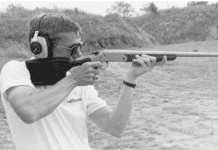




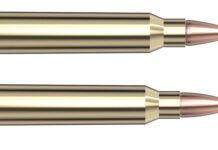

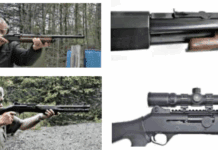
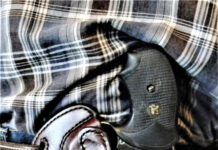

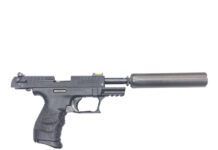



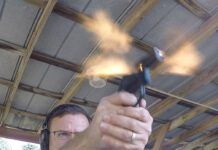
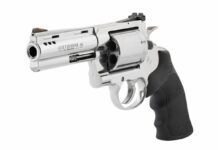

Why would you compare accuracy and velocity in a 2 1/2 inch barrel vrs a 4 inch barrel in two different manufacturers? Of course the longer barrel is going to have more velocity and accuracy, especially in a revolver!
Don’t overlook Charter Arms Bulldog in .44 Spl., especially the Classic Model. A very compact, shootable .44.